Looking at images from the current Tokyo Fashion Week, I have tried to define, from a distance, what makes Japanese style so distinctive.
Our global universe mostly draws clothing trends together in a homogenous group. Yet Japan stands apart. There is the drape of shifting cloth across the body; the cut at a sharp angle; the fluidity of sexuality; and patterns that come from deep in the artistic psyche of the country.
Frustrating though it is not to be in Tokyo now, to witness the work of new designers and those from other Asian countries such as the Philippines, there is always something to see and to say about Japanese fashion – a subject that I did not pay enough attention to during the crowded Paris Spring/Summer 2019 season.
Issey Miyake
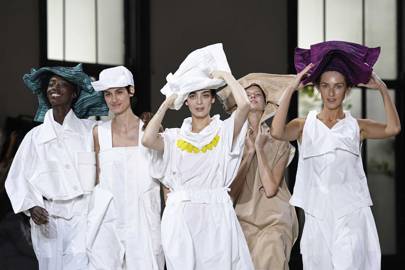
At Issey Miyake Spring/Summer 2019, Creative Director Yoshiyuki Miyamae launched a new technical material – "Dough Dough" – that can be folded and twisted into shape, as shown here on hats and headpieces
Getty
I was fascinated by designer Yoshiyuki Miyamae’s latest developments as Creative Director at Issey Miyake. He called it “Traces of Hands” – suggesting clothes for those who grow crops, gather food, make tools, draw pictures and decorate themselves, in what seemed like a homage to workers.
But it was the designer’s idea of clothes having “further freedom”, as he called it, which galvanised his collection. Human hands had woven, sewn, and shaped an innovative new material by a system called “Dough Dough”, translated by the designer as “twisting, rolling up, crumpling, folding or stretching”.
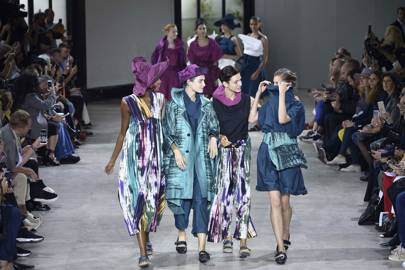
At Issey Miyake Spring/Summer 2019, colours both subtle and sumptuous, and beautiful folding techniques
Getty
But the designer’s exceptional skill was not only in shaping the clothes, but also in his painterly palette – in plain beige or white, but also in patterned blue, green, turquoise and pink. That colouring even extended to hats, which the designer folded flat, shaped into twisted headpieces, or made from stiff straw.
The sense of freedom that blew like a breeze through the collection showed how intelligently the designer is running fast forward in founder Issey Miyake’s footsteps.
Yohji Yamamoto
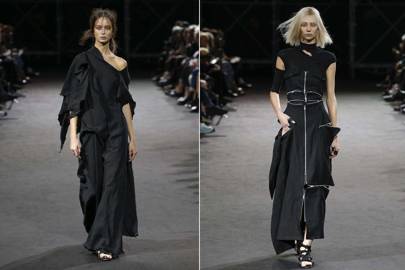
Yohji Yamamoto Spring/Summer 2019
Yannis Viamos / InDigital.TV
The fluid, unstructured clothes that wrapped across the torso, almost all in black, seemed familiar but still extraordinary in the way that each piece was scissored to display flesh somewhere on the body. Necklines sloping off at an angle – or with a cut-out revealing just the shoulder bone – were followed by zips opening or closing in a way that suggested a woman in control.
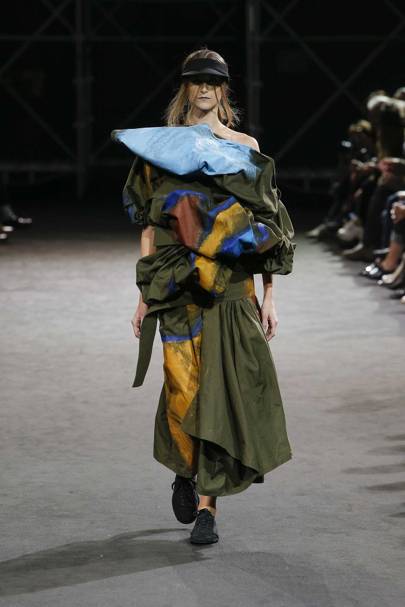
Yohji Yamamoto Spring/Summer 2019
Yannis Viamos / InDigital.TV
As the cuts appeared at the thigh or in sharp pleats at the hip, sexuality was starkly elegant. But the designer always offers surprises. For this Spring/Summer 2018 collection it was colour – sky blue, sunshine yellow, olive green, mauve – all bunched together in folds of cloth blossoming like flowers. Followed by more cerebral tailored outfits – slim line but patterned with circles and waves – Yohji proved that his highly personal codes for women’s dress offer female freedom.
Sacai
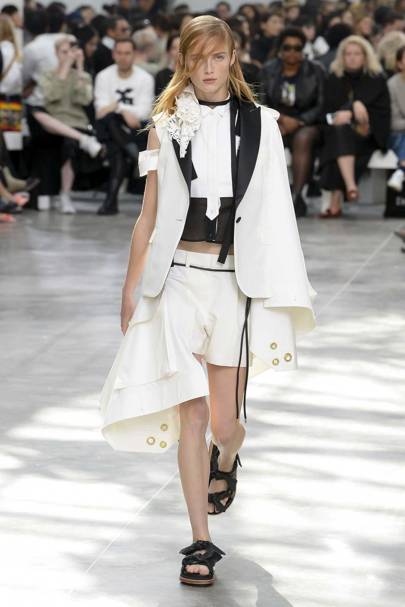
Sacai by Chitose Abe, Spring/Summer 2019
Monica Feudi / InDigital.TV
“Hybrid” is the word automatically associated with designer Chitose Abe, ever since she started her fashion career by showing different front and back aspects of a single garment. That much-copied idea has led the designer on to diverse paths, most recently allowing a piece from each outfit to hang free, with a spare lace sleeve or an extension of one leg of shorts.
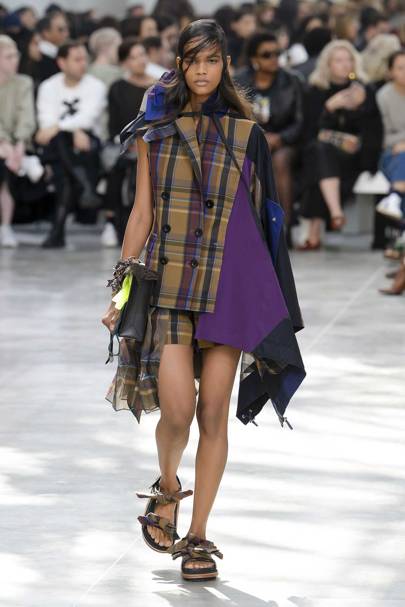
Sacai by Chitose Abe, Spring/Summer 2019
Monica Feudi / InDigital.TV
The effect was mostly ingenious, meaning that a piece of fabric would flow over like spilt milk or a skirt float away to the side. At its best, the idea of fabric shifting and shaping itself on the body goes back to the soul of Japanese fashion: the kimono. But Chitose Abe’s vision was much tougher for less graceful times, sending onto the runway military effects with angular plaids and checks. Yet when their patterns moved from geometry to floral, there was a return to a more feminine sweetness.
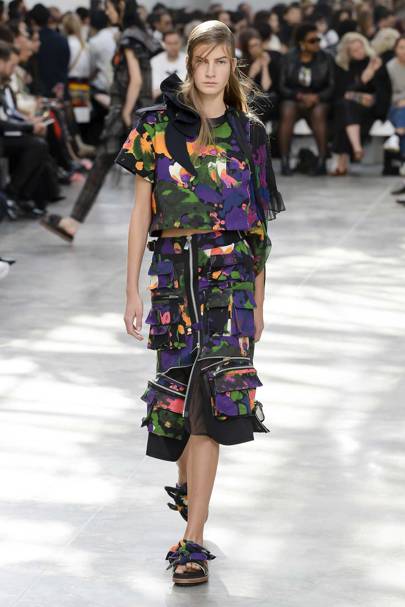
Sacai by Chitose Abe, Spring/Summer 2019
Monica Feudi / InDigital.TV
No comments:
Post a Comment